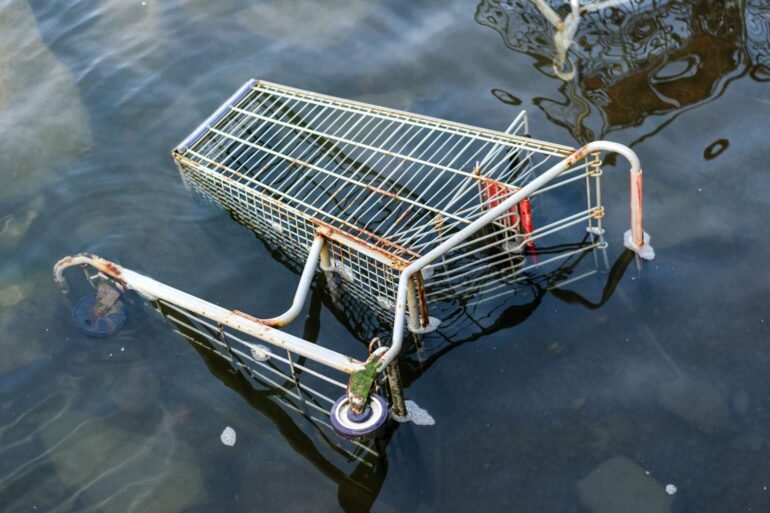:max_bytes(150000):strip_icc():format(jpeg)/Abandoned-Shopping-Carts-Do-More-Damage-FT-BLOG0925-388a19de632448908f67aeddcf1e3bdf.jpg)
- More than 520,000 shopping trolleys are left abandoned across the U.K. each year, causing both financial losses for supermarkets and environmental issues.
- A new University of Warwick study found that collecting and refurbishing carts generates significant carbon emissions, mainly from diesel vans used for retrieval.
- Despite the impact, researchers note it is still more sustainable to recover carts than to manufacture new ones, making prevention the most eco-friendly solution.
Supermarkets are trying nearly everything to keep their trolleys in check, from coin slots to wheel locks, and even high-end trackers. Despite these efforts, more than 520,000 still go missing across the UK each year, according to a new report. It turns out, tracking those carts is pretty important because it can help stores save money and protect the environment too.
In early 2025, researchers from Warwick Manufacturing Group at the University of Warwick released their study findings on the carbon footprint of collecting and refurbishing all those abandoned trolleys.
“Thousands of shopping trolleys are reported as abandoned in the UK every year,” Neill Raath, lead author of the study and assistant professor at WMG at the University of Warwick, shared in a statement. “When you multiply the carbon impact of retrieving each one, it becomes both significant and concerning.”
How significant? According to the researchers, it would amount to the “equivalent of flying from London to New York and back twice.”
As for where all those added carbon emissions come from, the researchers explained that supermarkets rely on commercial collection services, which use “diesel vans to survey suburban areas, to collect and return the trolleys.”
To understand the full environmental impact of abandoned trolleys, the researchers examined their entire lifecycle, from manufacturing to disposal and retrieval, focusing on trolleys abandoned in the Coventry community, including the Cannon Park Shopping Centre and the University of Warwick campus.
According to the researchers, the collection companies reported gathering about 20 trolleys per week in this zone. They also estimated that 100 trolleys are sent for refurbishment (regalvanisation using a zinc coating) each year.
They found that collection made up 1% of a trolley’s environmental impact, while refurbishment contributed another 8%. They added, “Manufacturing the trolley is the costliest part of a trolley’s life cycle, namely due to the construction of the steel frame.”
They then calculated the environmental cost of the 520,000 abandoned trolleys in the UK, based on whether they were collected in a van, which would emit the equivalent of 343 metric tons of CO₂, a figure the team stated in their press release as being “the annual equivalent of driving eighty petrol cars.” The researchers also explained that if just 10% of the trolleys are refurbished, it would “almost double those emissions.”
However, the researchers noted that while the number seems high, collecting abandoned trolleys with these services is actually more carbon-efficient than leaving them or manufacturing new ones. “We found that one trolley would have to be collected 93 times by a diesel van to have the same environmental impact as manufacturing a new one,” Raath added.
The team also added that the most sustainable solution is to prevent losses in the first place by keeping items in use longer. So, this is a reminder for you to please return that cart when you’re finished. It’s not only polite but also good for Mother Nature.
“While it is unlikely that we can ever stop trolleys being abandoned,” Raath said, “we hope that next time people see a trolley in an alley or park bush, they’ll consider the environmental impact of letting it go unused.”
Stacey Leasca
2025-09-21 11:01:00

